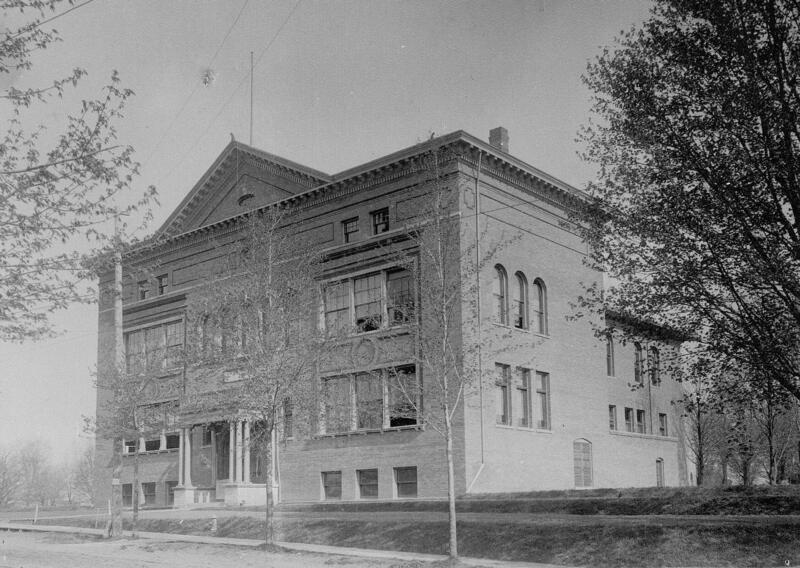-
Building Name
-
Welch Hall
-
Description
-
Welch Hall, named after the first president of the school, Adonijah S. Welch, was constructed in 1896 to serve as the new training school building on the Michigan State Normal School (MSNS) campus. The building held classroom space for grades K-8, offices, and an assembly room that could accommodate 400 children. After the MSNS reached collegiate status in 1899, attendance greatly increased, resulting in east and west wings being added to Welch in 1900, and a north-west wing being added in 1909, to create more classroom space for the growing student population. The training school moved to the Roosevelt building when it was constructed in the 1920s, and for the next forty years Welch Hall served as the home for many different academic departments. In the 1960s, Welch was converted into office space and it began being used as the main administrative building on-campus, which is still the purpose it serves today.
Welch was nearly demolished in the 1980s, as decades of poor maintenance caused the building to significantly deteriorate. Dr. Andrew Nazzarro, the man who established the Historic Preservation program at EMU 1979, started the “Don’t Squelch Welch” button campaign to promote support to save the building. This campaign was a success, because in 1985 a $2.5 million federal grant was awarded to EMU to renovate Welch Hall and ensure that the building could continue to serve the EMU community.
-
Namesake Biography
-
Adonijah Strong Welch was the first Principal (President) of Michigan Normal School as well as the youngest, accepting the position at the age of 31. As an administrator, he stuck firmly to all rules and guidelines. Charles Fitz Roy Bellows, who served as acting principal for the School, observed that Welch was the most rigid disciplinarian in the school system he ever knew. Welch's philosophy of learning was less constricted and he encouraged students to be open-minded, independent thinkers and to analyze rather than memorize. Welch believed the school had a very promising future ahead of him. His youthful energy and passion for teaching lead the Normal School through its formative years. Welch arrived in the state of Michigan with his parents at the age of 18. In 1843, he enrolled at the University of Michigan and became the first principle of the Preparatory Department the following year. Welch completed his Bachelor's degree in 1846 and his masters in 1852. Welch studied law in Detroit, and was admitted to the bar. He served as principal of Michigan State Normal School from 1851 until 1865 when Welch tendered his resignation to the State Board of Education siting poor health. After leaving the Normal School Welch retired to Florida. He then was elected for a short term in the United States Senate in 1868. After his short political stint, Welch was offered the opportunity to be founding president once again, this time at the Iowa State Agricultural College (now Iowa State University). Welch accepted and took on the task of establishing yet another institution. However, Welch's strong personality and beliefs alienated the faculty and alumni in Iowa and in 1883 protesters demanded Welch be removed from his position, and the school's Board obliged. After a year a European travel Welch accepted the chair of History of Civilization and Practical Psychology at Iowa. He served on the faculty until his death in 1889.
-
Building Namesake
-
Adonijah S. Welch, First President of Normal Training School
-
Year Constructed
-
1895
-
Date Dedicated
-
29 March 1897
-
Building Functions
-
Administrative Offices
-
Training School
-
Architect
-
E.W. Arnold, Battle Creek, MI
-
Original Cost
-
70,000
-
Architectural Style
-
Georgian Revival
-
Square Footage
-
48,302
-
Rights
-
This Item is protected by copyright and/or related rights. You are free to use this Item in any way that is permitted by the copyright and related rights legislation that applies to your use. In addition, no permission is required from the rights-holder(s) for educational uses. For other uses, you need to obtain permission from the owner, Eastern Michigan University Archives (lib_archives@emich.edu).






